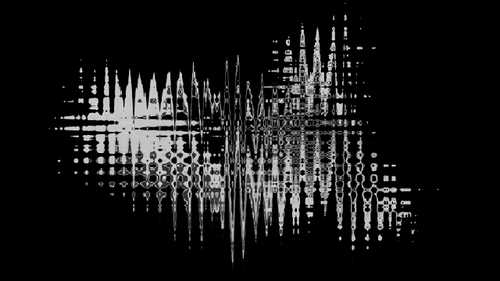
What is sound diffraction? Definition and examples
Sound waves do not always travel in a straight line, due to the process of diffraction. Sound diffraction refers to the bending and spreading out of waves as they pass around objects or through an aperture.
Sound travels via sound waves; these waves are “a disturbance […] which travels through a medium”. The particles that make up that medium (say, air, water, or soil) are agitated by the disturbance, but do not themselves move; only the disturbance itself moves. In this way, the disturbance (the wave) transfers sound energy from, say, a loudspeaker to a listener’s ear.
However, sound waves do not always travel in a straight line, due to the process of diffraction. Diffraction refers to the bending and spreading out of waves as they pass around objects or through an aperture; that is to say, sound waves’ interaction with a barrier will cause the waves to change direction. It is due to these interactions that sound can be heard even when the source is, say, around a corner.
All light waves experience diffraction, even light waves, though this is generally less easily observed; for example, light does not flow around a corner in the way that sound does. This is due to the difference in the frequency of the waves: the higher the frequency, the shorter the wavelength and the less diffraction. As light waves have a much higher frequency than sound waves, and therefore much shorter wavelengths, they appear not to diffract at all.
The amount of diffraction, then, is dependent upon both wavelength and the size of the object the waves are interacting with. If an obstacle is smaller than the wavelength, then the sound waves will mostly bend around that obstacle (and reform on the other side).
If a sound wave passes through an aperture of a similar size to its wavelength, this will cause the waves to spread a lot; a gap much wider than the wavelength will only cause a little spreading.
Also, longer wavelengths cause more pronounced sound diffraction, meaning that low frequencies can bend around obstacles more than high frequencies can – so different types of sounds can be heard from beyond obstacles or barriers. And, when emerging from behind a barrier, the sound which has the shortest wavelength, compared to the size of the obstacle, will sound the quietest.
Whatever the situation, the wavelength of a sound wave is not changed by diffraction.
Featured photo by Logan Voss on Unsplash
Earth.fm is a completely free streaming service of 1000+ nature sounds from around the world, offering natural soundscapes and guided meditations for people who wish to listen to nature, relax, and become more connected. Launched in 2022, Earth.fm is a non-profit and a 1% for the Planet Environmental Partner.
Check out our recordings of nature ambience from sound recordists and artists spanning the globe, our thematic playlists of immersive soundscapes and our Wind Is the Original Radio podcast.
You can join the Earth.fm family by signing up for our newsletter of weekly inspiration for your precious ears, or become a member to enjoy the extra Earth.fm features and goodies and support us on our mission.
Subscription fees contribute to growing our library of authentic nature sounds, research into topics like noise pollution and the connection between nature and mental wellbeing, as well as funding grants that support emerging nature sound recordists from underprivileged communities.
